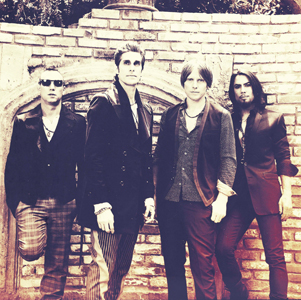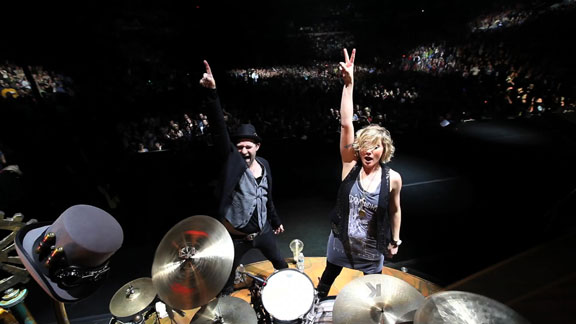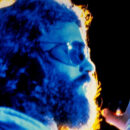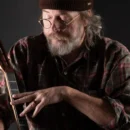By Gary Graff

There is a sense of event every time Jane’s Addiction puts out a new album. It is something that comes from a legacy of invention, innovation and irreverence, both as a recording entity and a performance-art minded live act. It’s also because it doesn’t happen very much. Since the group formed during 1985 in Los Angeles, it has released just four studio albums—including the new The Great Escape Artist, its first set of new material since 2003’s Strays—and a few compilations. There’s also an attendant drama to the band, whether its members are together or apart, mostly centered around how well the remaining founders (frontman and Lollapalooza co-founder Perry Farrell, guitarist Dave Navarro and percussionist Stephen Perkins) are getting along at what time or another. The lead-up to The Great Escape Artist has been particularly eventful, starting with a band reunion in 2008 that included the return of original
bassist Eric Avery, who opted not to stay on. Then Duff McKagen spent a few months in Jane’s world before also leaving. TV on the Radio’s Dave Sitek worked on The Great Escape Artist with producer Rich Costey (Farrell is listed as co-producer), but was never a group member. Now Chris Chaney, Jane’s bassman from 2002-04, is back in the lineup again. It’s been the proverbial long, strange trip, but while Jane’s given up on Sergio, Jane’s Addiction soldiers on, proudly.
Music Connection: There has not been a lot of recorded product in your 26 years together, which certainly gets people excited when there is something new, but still seems...unusual. Are you just a bunch of quality-over-quantity kind of guys?
Perry Farrell: I look at it like facets of music; for me, the key is to be diversified. I have other musical adventures. I have Lollapalooza and I put a lot of effort and love into that and it’s a beautiful beast. And I do my DJing and I love playing electro and other things. And I like to have Jane’s always there. I know the other two guys are always there, and I’m always there for Jane’s.
Dave Navarro: We’ve all made a number of records outside of Jane’s Addiction. If you were a Jane’s Addiction fan this may look like the fourth album, but to each of us as individual artists it’s however many albums in our careers that we’re on.
I’ve done solo records. I’ve done Panic Channel, the [Red Hot] Chili Peppers. Perry’s done a number of records, so has Stephen. It’s not like any of us have been dormant in between Jane’s Addiction records, you know?
Stephen Perkins: Jane’s Addiction has been a band since we were 17. It’s been healthy for us to break up and come back together as many times as we have. It makes it exciting again.
That’s not to say Metallica or anybody else who’s constantly making records for 20 years is wrong; we’ve just never had that experience. For us it is exciting to go make another record together.
MC: The Great Escape Artist has been in motion since you guys got back together in 2008. What has the process been like?
Farrell: I’ll be honest with you––we started to record and things got kind of ugly. (Laughs) It’s like the last hurdle for us. It’s one of those things where the head-butting really came out when we tried to write. But I’m very patient. I can’t expect things to be perfect overnight. It’s like a family that argues; we get together again––and we haven’t been together for a few years––so there’s got to be some place it all comes out. You’re talking about all the frustration of not getting your way or whatever for all these years. There’s still animosity built up. But the fact we are all getting back together is a super-positive sign. Eventually we get a song, then another, then another...
Perkins: We did a week with Trent [Reznor] before the NINJA Tour [in 2009]. We didn’t really have enough time or headspace; we were preparing for the tour, and someone said, “Let’s try to record with Trent.” Who would say no? But that was just timed wrong. We didn’t have enough time together as a band with Eric [Avery] back in; not enough time to find the noise. We had good songs, but we all thought it wasn’t ready, so why release it?
Navarro: Since [late 2010] this album is one of the most enjoyable journeys that I’ve been on, musically, probably in many, many, many years. I really enjoyed taking our time with this because the process is so enjoyable. You hear people say that it’s not the journey, it’s the destination. In this particular case, I was really digging the journey, probably for the first time in a long time.
MC: There was a lot of drama that went on within the band during the past couple years. Eric was back for a tour, then he was out. What happened there?
Navarro: To be honest with you, that’s a question for Eric. I don’t like to speak publicly about other people. There’s been so much talk and speculation about that particular subject that I’d just as soon go forward, just to be fair. He can answer that for himself if he ever wants to.
MC: Then Duff McKagen was with the band for a minute.
Navarro: That was actually a really good experience for me, ‘cause I’ve known him forever. It was really like having an old friend in the mix and it felt kinda comfortable to have someone that I’ve played with a number of times in our Jane’s Addiction environment.
Perkins: There was some good stuff that came out of the three or four months we were working with him. Then he left and moved on and we had to re-think. We looked at each other, “Okay, how do we do this?” Me and Dave were talking with Perry and saying, “We’ve been doing this for so long, we can’t be derailed by a bass player. We have to be creative.” At that moment Rich Costey had the idea to bring in Dave Sitek, and I love TV on the Radio. They’re so different from anything I do, and I love having that, those different kind of voices and ideas and whatever we can bring in to blend with what we do.
MC: That hybridization and reconciliation of differences is really the story of Jane’s Addiction, isn’t it?
Navarro: I think so. We’ve never been on the same page in terms of our personal tastes, any one of us. We all have different record collections, with a few bands we land on at the same time ––classic Pink Floyd, Led Zeppelin and [Rolling] Stones. We all kind of come together in that one little genre, but apart from that everything we love and are influenced by as individuals is completely different. None of us have the same iPod library.
Perkins: Yeah, we all come from different places and are drawn to different things. We each like music for different reasons, almost. We all like different stuff. So the question becomes how do you make that fit into one song? It means everyone has to do his homework, do it even before getting to the studio.
Navarro: We have faith in the fact that it has always worked for us in the past. Sometimes contradictory influences forces you to stretch out further as a personal inventor and get out of your comfort zone. That’s the best way to evolve, I believe. That’s what makes it challenging, and then rewarding.
“I’ll be honest with you--––we started to record and things got kind of ugly. (Laughs) It’s like the last hurdle for us. .... The head-butting really came out when we tried to write.”
MC: What were the contributions that your new collaborators brought to The Great Escape Artist?
Perkins: Dave Sitek really opened my eyes. That’s important as an artist to be forced to change. And there’s still a nod to what we are. When Rich [Costey] and Dave Sitek have conversations without Jane’s there and about their hopes and dreams for what it’s going to sound like, everyone’s got a different sound in their head. It’s exciting to have those two new brains involved and different ideas being thrown to the canvas. There was a lot to choose from and be inspired by.
Navarro: One of the things I loved about working with Dave was that he likes to work really fast ––get an idea, put it down, move on. Whereas I think Perry and I are a little bit more inclined to sit and tweak and turn knobs for three or four days on one idea. So when I was working with Sitek and Perkins, just the three of us, my natural inclination would be to sit and dial and turn and play with effects and knobs. But Dave would pretty much say, “No, that’s it. Let’s move on,” and I allowed him to take those reins. And Rich was somewhat of a perfectionist and really great at helping achieve tones. He’ll do the knob-turning for me. It’s funny, ‘cause Sitek and Costey are night and day in terms of how they operate. I had to kind of emotionally readjust depending on who I was working with on a daily basis, which always kept things fresh.
MC: What led to bassist Chris Chaney rejoining the band during the process?
Navarro: The majority of the album was written by the time Chris came in, but he pretty much glued everything together. There was a moment where things sounded really good, but just didn’t sound solidified or cohesive, and he kind of came in and did that. Out of all of us, Sitek and Costey included, Chaney’s probably the most learned and brilliant musician of the bunch. He’s the guy who understands numbers and letters, whereas none of us do. He comes in with a real musical education and history provided from pretty important, unique, coagulating concepts and really made songs work that weren’t necessarily going to work otherwise.
MC: So after all the time you spent working to make this album a reality, what do you think you’ve got here?
Navarro: I’m feeling pretty good about it. What surprised me overall about it is that it just sounds like Jane’s, but it sounds like a different band as well. I don’t know how you accomplish that. I don’t know how we would set out to sound like ourselves while sounding like someone else. I wouldn’t know how to intend to do that, but I think that’s what we did.
Perkins: These are songs that take you on a journey, songs that grow from soft to hard to tribal to psychedelic to metal in one song. We’re exploring that hybrid again. Of course you can go in and make a rock record overnight almost ––that doesn’t mean it’s the next Jane’s record. It’s important to all of us to make it authentic, emotional, original and also not to fake it at any moment, and just to really feel it. That makes it a real Jane’s Addiction record.
MC: There’s a big difference in the way people consume music now––and even how they did back in 2003––whenStrays came out. What impact does that have on you?
Farrell: The way the music industry was run back in the mid-‘80s, when we started, when we got off the ground, it doesn’t exist anymore. I don’t abide by all those rules. It would be a wonderful thing to have Jane’s always there and at a certain time of the year go out with Jane’s and be active musically and record some with Jane’s and always have musical currency with Jane’s, along with the live electro music and with Lollapalooza. I think the business is set up better now for someone like me, who wants to do different things like that.
MC: What kind of instrument and sponsorship endorsement deals do you have now?
Navarro: I have a signature Paul Reed Smith and I also have a signature Epiphone acoustic guitar. Those are es-sentially the only things I use on stage.
Perkins: I’ve got a signature drumstick (through Pro-Mark) made out of oak, which is quite different. Most drummers use hickory or maple sticks. Oak sticks last a long time but feel quite different, almost like a Number 2 pencil. They don’t bounce as much. I love using brushes and mallets and things when we’re creating, but when I’m playing a (live) set with Jane’s, it’s all about my sticks. And I’ve got deals with Zildjian, DW and Remo. It’s great to get that good stuff as long as I go out and play it. I hate when it sits in your closet for five years. Drums are made to be hit.
MC: Back in May of 1987, when Jane’s was on our cover for the first time, there was a lot of talk about how listeners weren’t sure what to make of the band’s amalgamated rock-metal-funk-punk sound, and how early critics dwelled a lot on the Led Zeppelin influence. What effect does early criticism like that have on a developing band, and what’s the best way to deal with it?
Navarro: I don’t recall ever having to “deal” with it. Frankly, a lot of those observations and criticisms don’t come around until the body of work is presented, so there’s nothing we can do about it; it’s not like you can read something about the work you’ve done and then go back and change it. So we don’t pay a whole lot of attention to that. And certainly the playing field is so different now that it’s impossible to even keep track of what’s being said anymore.
I think that what we’ve always done, and what we continue to do, is just be who we are, which is a continually evolving thing, and sometimes we have to go away from one another in order to keep evolving. That’s one of the elements that’s allowed us to keep making music, the fact that we’ve stopped doing it from time to time. If we had stayed in this area since day one, I don’t know if we would’ve survived.
Contact Mitch Schneider, MSO, mschneider@msopr.com












